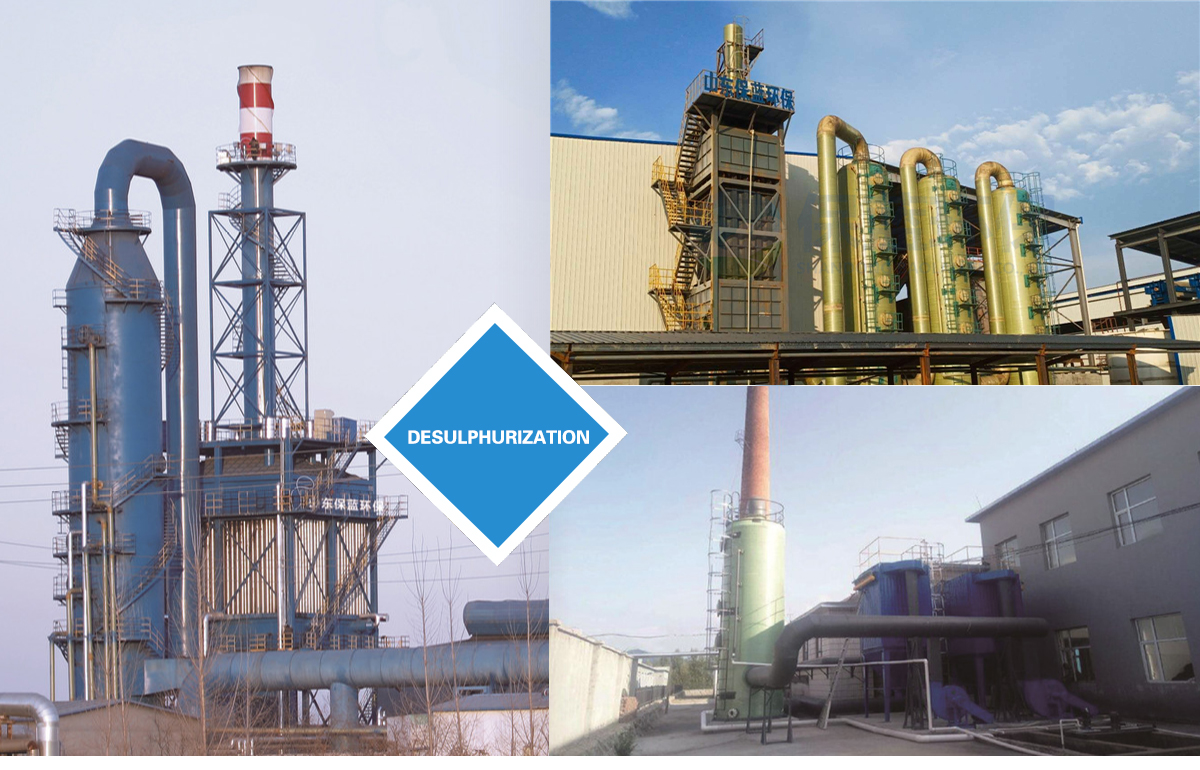Welcome to BAOLAN EP INC.
24-Hour Hotline
- Carbon Capture Utilization
- VOCs series
- DeSOx-DeNOx-Dedust
- Consumables

Contact Baolan

Address: Jurong East Road, Huantai Industrial Park, Zibo City, Shandong Province
Tel: +86-135-8959-1050
E-mail: [email protected]
Tel: +86-135-8959-1050
E-mail: [email protected]
Industry Knowledge
Detailed explanation of wet flue gas desulfurization limestone-gypsum method technology
时间: 2025-05-09 11:40
Detailed explanation of wet flue gas desulfurization limestone-gypsum method technology The limestone-gypsum method in wet flue gas desulfurization (also known as limestone wet flue gas desulfurization, referred to as WFGD) is one of the ma
Detailed explanation of wet flue gas desulfurization limestone-gypsum method technology
The limestone-gypsum method in wet flue gas desulfurization (also known as limestone wet flue gas desulfurization, referred to as WFGD) is one of the mainstream technologies for flue gas desulfurization in coal-fired power plants, industrial boilers, etc. Its core is to absorb sulfur dioxide (SO2) in flue gas through alkaline slurry (limestone), and finally generate gypsum (CaSO2·2H2O) as a byproduct. The following is a detailed introduction to the technology:
1. Basic principles
Chemical reaction process:
SO2absorption:
SO2 in flue gas dissolves in water to form sulfurous acid (H2SO3), which reacts with limestone slurry (CaCO3):
SO2+H2O→H2SO3
H2SO3+CaCO3→CaSO3+CO2↑+H2OH2SO3+CaCO3→CaSO3+CO2↑+H2O
Oxidation reaction:
Air is forced into the air to oxidize calcium sulfite (CaSO3) to calcium sulfate (CaSO4), which crystallizes into gypsum:
2CaSO3+O2+4H2O→2CaSO4⋅2H2O2CaSO3+O2+4H2O→2CaSO4⋅2H2?O
2. Process flow
Flue gas pretreatment:
After dust removal (such as electrostatic precipitator), high-temperature flue gas enters the absorption tower and usually needs to be cooled to 50-60℃ (through spray cooling or GGH heat exchanger).
Absorption tower reaction:
Limestone slurry (concentration 10-30%) is sprayed down from the top of the tower and contacts with the flue gas flowing upstream.
SO? is absorbed to generate calcium sulfite, and air is blown in to promote oxidation.
Gypsum crystallization and dehydration:
The slurry at the bottom of the absorption tower is oxidized to form a gypsum-containing suspension, which is concentrated by a cyclone and dehydrated by a vacuum belt conveyor (water content <10%).
Net flue gas emission:
The flue gas after desulfurization is removed from the droplets by a demister, and then heated (to prevent "white smoke") and discharged through the chimney.
3. Key equipment
Absorption tower: core equipment, common types include spray tower, packed tower, and bubbling tower.
Slurry circulation pump: maintain the slurry spray volume and ensure the gas-liquid contact efficiency.
Oxidation fan: provide air to oxidize CaSO3 to CaSO4.
Gypsum dehydration system: cyclone, vacuum belt conveyor, etc.
GGH (flue gas heat exchanger): optional, recover the net flue gas heat to preheat the original flue gas (improve energy efficiency).
4. Technical features
Advantages:
High desulfurization efficiency (>95%), suitable for high-sulfur coal flue gas.
Byproduct gypsum can be used for building materials (such as cement, gypsum board) to achieve resource utilization.
The technology is mature, the operation is stable, and it is suitable for large units.
5. Influencing factors and optimization
Limestone quality: The higher the CaCO3content, the better the reaction activity (generally required to be ≥90%).
Liquid-gas ratio (L/G): Increasing the liquid-gas ratio can increase the desulfurization rate, but energy consumption increases.
pH control: Usually maintained at 5.0-5.5 (balance SO2 absorption and limestone dissolution).
Chloride ion concentration: Wastewater needs to be discharged regularly to prevent corrosion (Cl- concentration is generally controlled at <20,000 mg/L).
6. Application areas
Coal-fired power plants (main desulfurization technology).
Industrial kilns such as steel, coking, and glass.
Flue gas treatment in waste incineration plants.
7. Environmental protection and economy
Emission indicators: SO2 emissions <35 mg/Nm³ (ultra-low emission standards) can be achieved.
Cost: The initial investment accounts for about 10-15% of the total investment of the power plant, and the operating cost is about 0.01-0.03 yuan/kWh.
Byproduct value: Gypsum purity ≥ 90% can be sold, otherwise it needs to be landfilled.

Summary
The limestone-gypsum method has become the mainstream choice for wet flue gas desulfurization due to its high desulfurization efficiency and maturity, but it needs to weigh energy consumption, wastewater treatment and byproduct utilization. Future development directions include optimizing system energy consumption (such as double circulation towers), improving gypsum quality and wastewater zero discharge technology.

Copyright © 2014-2023 BAOLAN EP INC.
Telephone: +86-135-8959-1050 E-mail: [email protected]
Address: Jurong East Road, Huantai Industrial Park, Zibo City, Shandong Province




